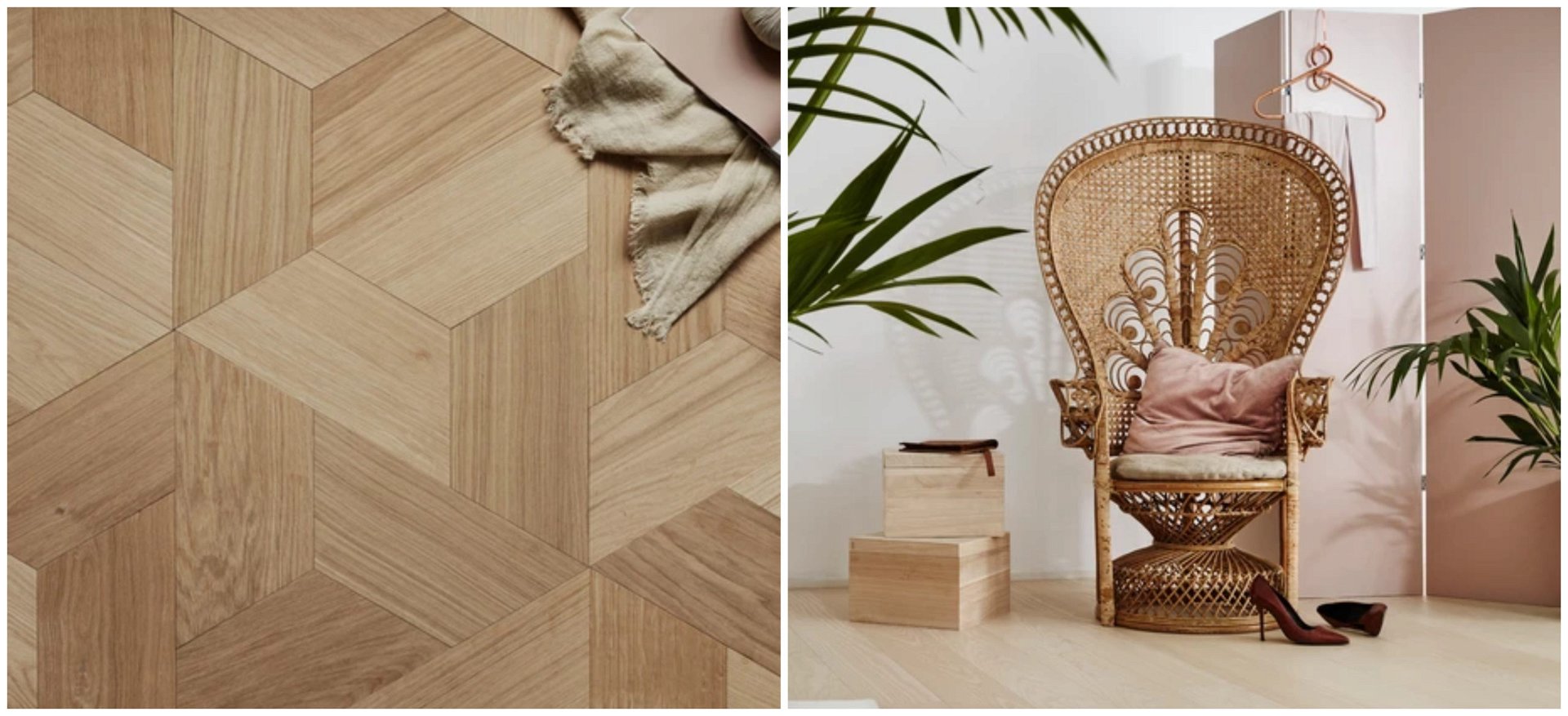Five Conscious Brands Every Interior Designer Should Know
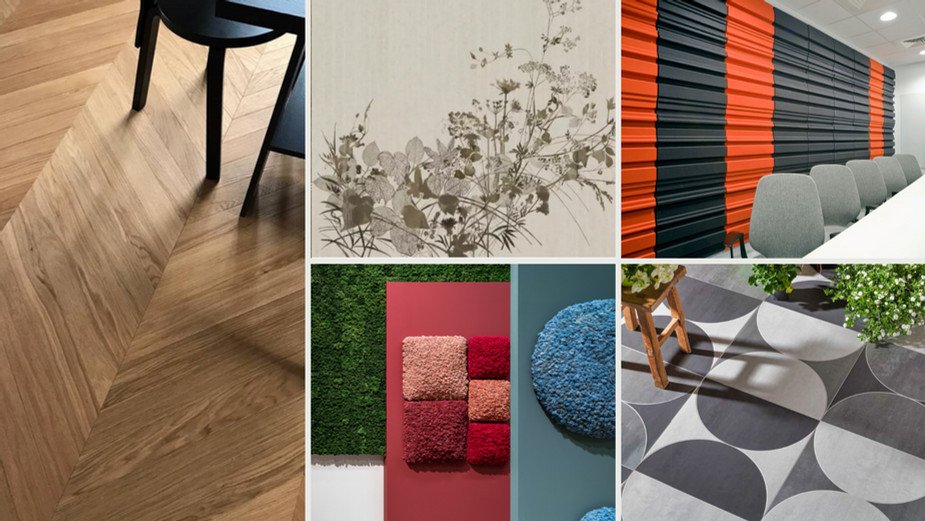
As a material specialist, the responsibility to educate interior designers about the composition of surfaces used on walls, floors and ceilings is implicit. Frequent conversation points are a product’s aesthetic value, technical aspects, durability, maintenance and budget. These have been the primary criteria for selection in urban design. But are we happy to deliver projects that tell half a story?
Far too often, as an industry we are content with beauty on a budget and a matching timeline. I’m here to question this primary motivation and challenge you to push conventional boundaries to redefine design itself. What if designing a space entailed creating structures that speak far more than what an occupant merely prefers? The story of any design project is devoid of a happy ending when the long-term effects of materials installed are ignored.
Here are my top five picks on companies that embed sustainable values in their production process, raw material and societal benefits. My suggestion is to review what they do and list a set of questions to ask your material supplier. My hope is to inspire a re-evaluation of your design studio’s criteria when selecting a material for future interior projects.
Nordgröna
Country of Origin: Sweden
Product: Reindeer moss for walls and ceilings
Sustainability Features: Acoustic rating of 1.0 NRC (noise reduction coefficient) for convex panels, Class A fire rating, fully recyclable, lasts a lifetime, zero-maintenance, hypoallergenic
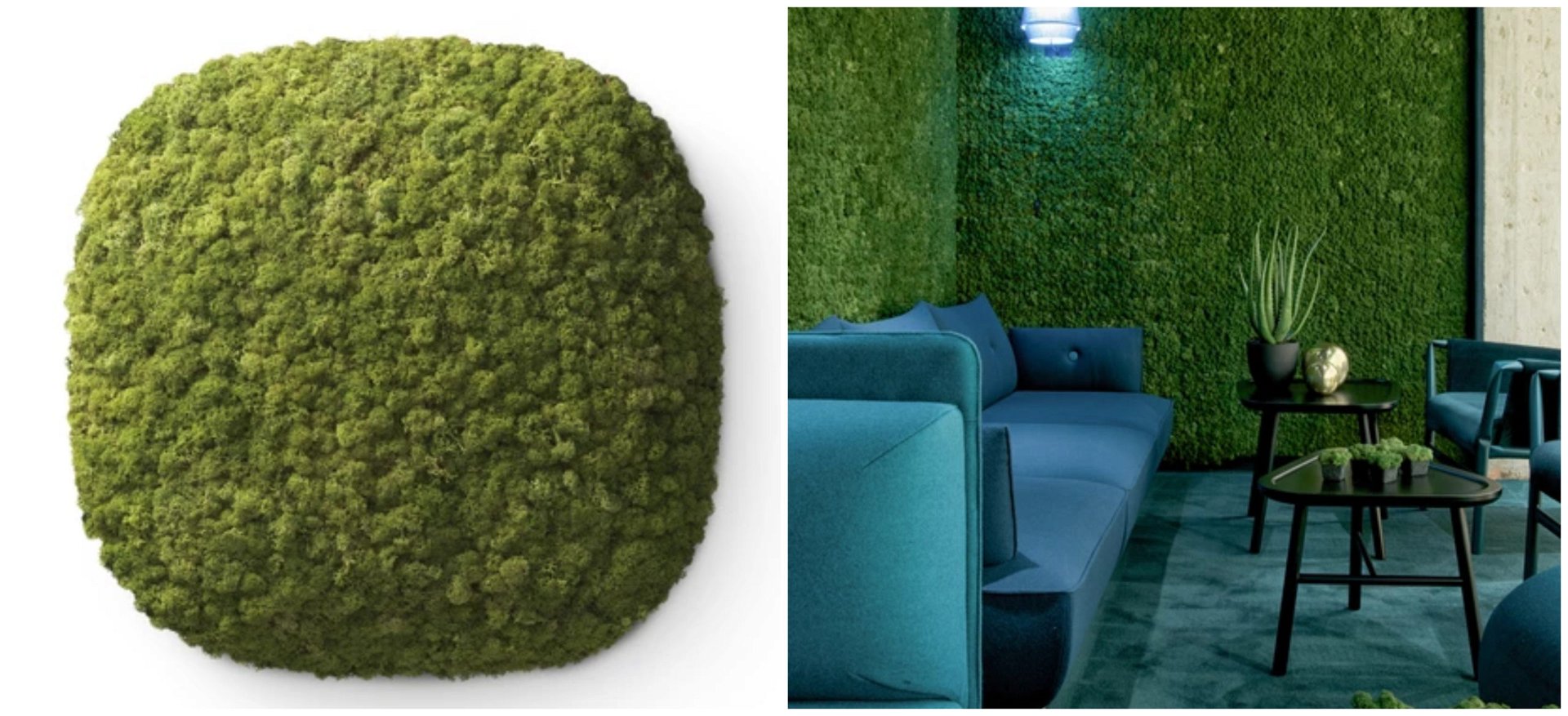
Stakeholder Benefits: Nordgröna is the densest reindeer moss in the market, which is an aesthetic feature high in demand. Their distinct density is the result of how lichen, the raw material for moss, is handpicked following strict rules in terms of environment and sustainability across an area of about 15.000 km² (5800 mi²). Lichen is picked from parts of the Scandinavian forest above a specific length to allow for optimal conditions for regrowth, thus respecting its natural habitat. No more than 20% of the amount is picked at a time, and the area is not revisited again for at least four years. Picking lichen requires a governmental permit in Sweden and the approval of landowners including forestry companies, municipalities and private individuals. The collection of lichen ensures employment for rural communities, and is a requirement in some forest areas where its overgrowth inhibits plants and animals. The picking of lichen is subject to a rigorous review (ISO 9001) conducted every three years as part of auditing all company activities. As a brand that contributes to green buildings, Nordgröna goes beyond the face value of green moss on a wall or ceiling for a “natural” look with what they do behind the scenes for the community and environment.
Mosa
Country of Origin: Netherlands
Product: Ceramic tiles for floors and walls
Sustainability Features: Free of red list materials that are harmful to people and the environment, clean indoor environment, VOC-free
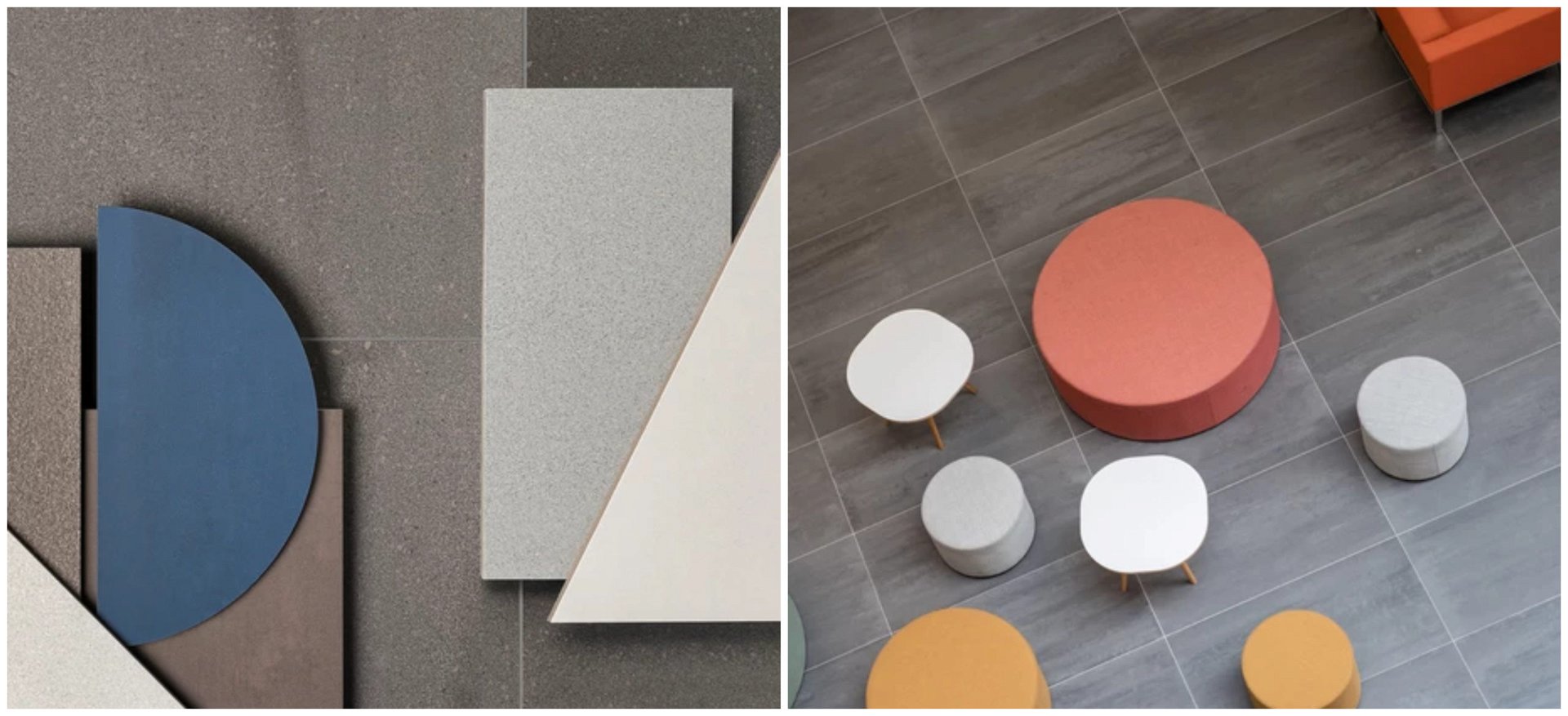
Stakeholder Benefits: Mosa is the only ceramic tile company in the world that adheres to the cradle to cradle (C2C) philosophy and is silver-level certified for most of its tile collections. Cradle to cradle assesses materials in five areas: material health, material reutilization, renewable energy, water sustainability and social equality. The company emphasizes sustainability as their foremost priority and has internal accountability towards a circular economy by striving to reduce waste and increasing reusability. The company’s cradle to cradle certification ensures that products are healthy, can be reused and returned, measured for energy and water consumption during production, and ethical treatment of the labor force. Contributing to Dutch and international green building labels such as LEED, BREEAM, DGNB, and HQE is also a distinct benefit for spaces that use Mosa tiles. The impact of their tiles is documented in sustainable product databases that clarify exactly how the products contribute to green labels. Currently, the company offers to take back wasted cut material in the Netherlands and returned into the production process. Mosa conducts externally-validated life-cycle analysis (LCA) on its tiles, showcasing the brand’s commitment to sustainable infrastructure.
Timberwise
Country of Origin: Finland
Product: Hard wood flooring and design parquet
Sustainability Features: No endangered wood species used, formaldehyde-free, products tested regularly by independent authorities
Stakeholder Benefits: Wood floor is a staple in many interior design projects with hundreds of suppliers around the world. For this reason it is worth being mindful of how wood is sourced, manufactured and installed by a company to assess its impact on health. Timberwise has pioneered many firsts in these regards. The first wood floor manufacturer in the world to offer completely formaldehyde-free glue that eliminates harmful emissions, the first to administer anti-bacterial treatment for its flooring, the first to test all its products in boiling water to ensure durability and the first wood flooring company to achieve an allergy label from the Finnish Allergy and Asthma Foundation. Their core belief as a company is to offer safe and steady flooring for children and families to enjoy for generations to come, thus incorporating practices around handpicking healthy raw materials that include avoiding endangered wood species. Manufacturing processes include the recycling of waste and byproducts, sourcing from sustainably managed forests and the use of their own solar panels in production to reduce negative environmental impact.
Soundtect
Country of Origin: UK
Product: Felt acoustic panels
Sustainability Features: Third generation recycled material, reuse of wasted exhibition carpet, acoustic rating of up to 1.0 NRC (noise-reduction coefficient), fireproof, hypoallergenic, non-toxic
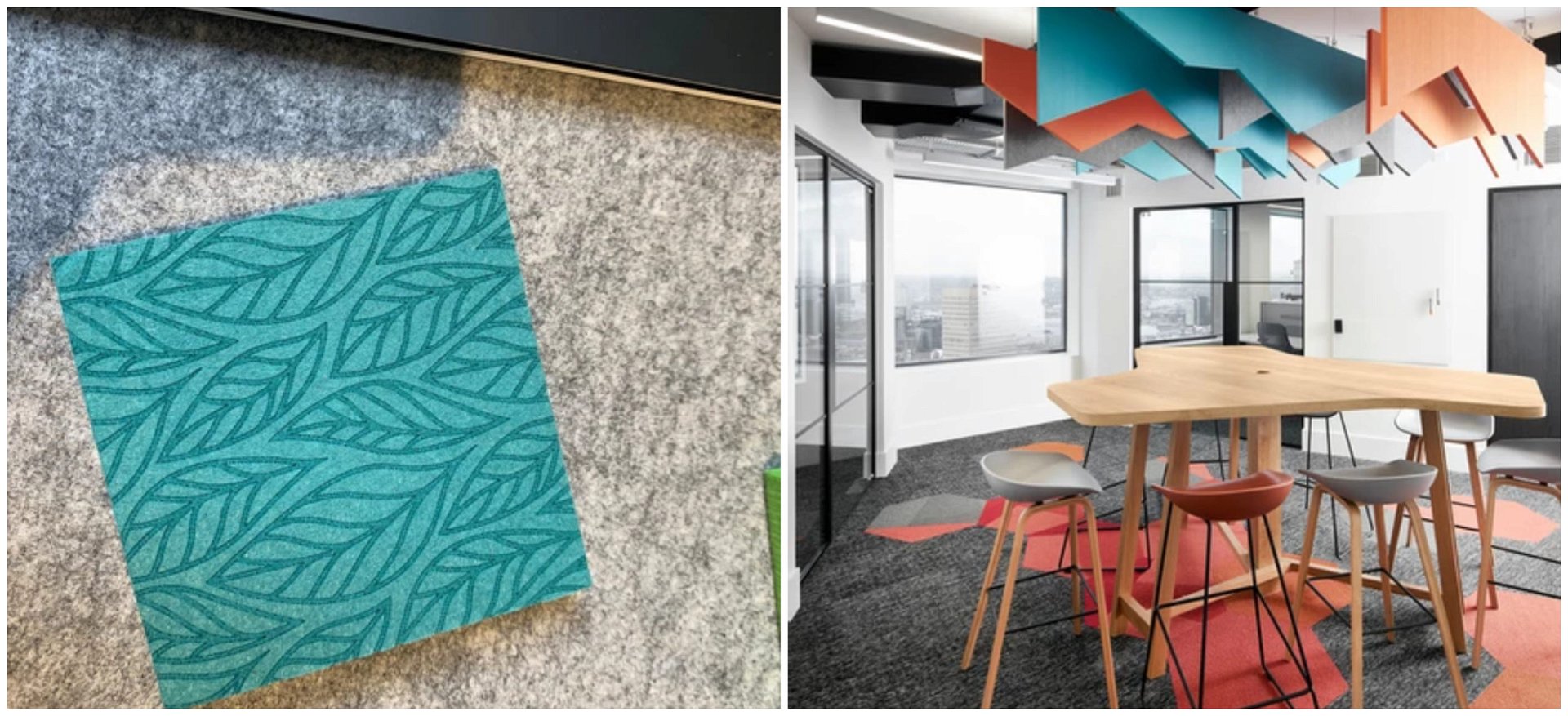
Stakeholder Benefits: In 2010 the founders of Soundtect formed the company in response to the immense waste occuring in the exhibition flooring industry. They found a way to transform this waste into high performing acoustic panels that contribute to significantly reducing dangerous noise levels. Soundtect acoustic panels are third generation products which began life as plastic bottles. PET bottles are turned into exhibition carpets for events around the world and once that short-term lifespan is over, Soundtect takes the waste product back again and carefully re-layers the carpet fibers to produce efficient acoustic felt panels. Soundtect panels are regularly tested to British and European standards for both fire and acoustics to ensure the highest level of safety. Because the original carpet fibers are already fireproof, this element is integral to the product and not simply sprayed on. Soundtect panels have achieved Class Bs1 d0, which means they have low contribution to fire, smoke emission and flaming droplets during combustion. Built on the foundations of a circular economy, 70% of the brand’s products are made from recycled material and is guaranteed to be allergen-free and non-toxic.
Glamora
Country of Origin: Italy
Product: Bespoke wallcovering
Sustainability Features: plant-based organic wallcovering, low emissions
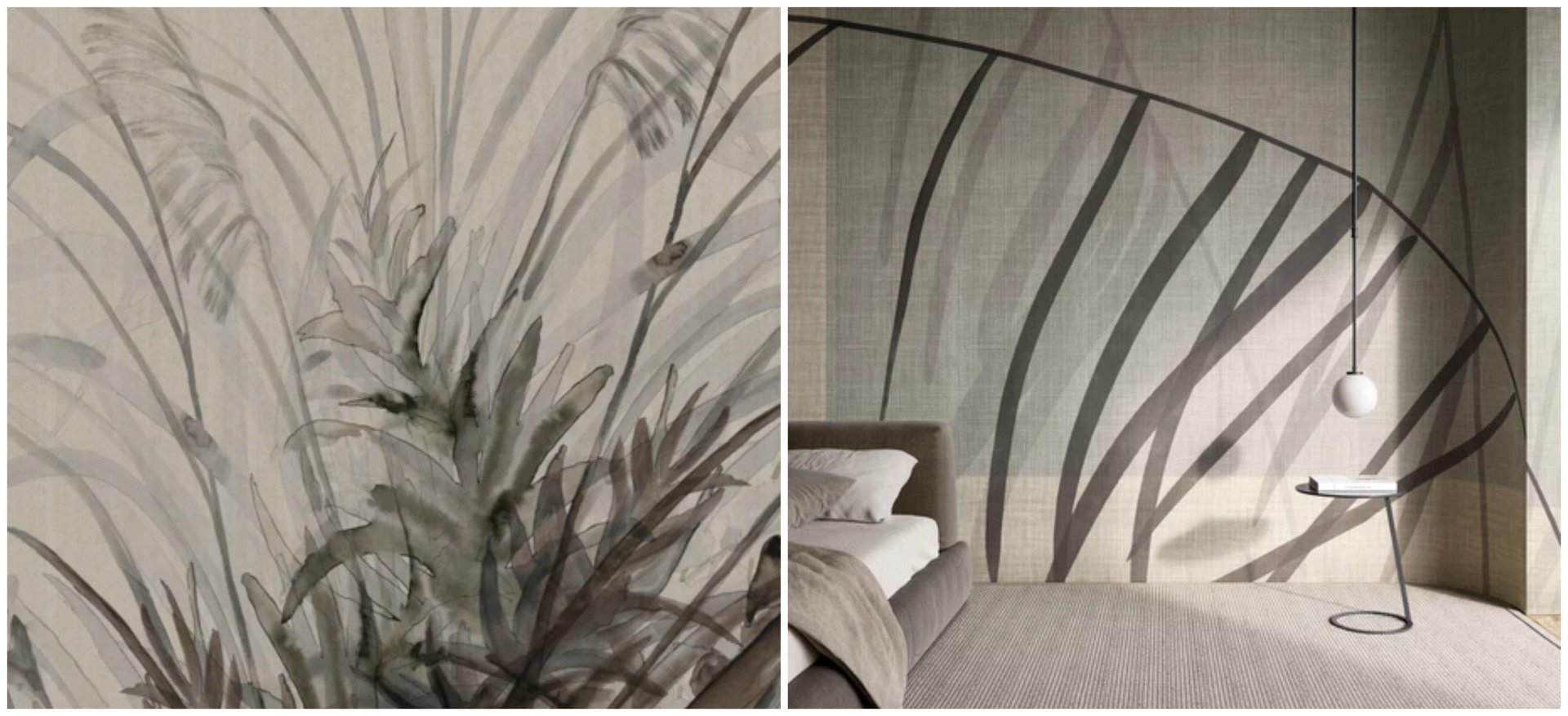
Stakeholder Benefits: When wallpaper started being mass produced in the 1960s, vinyl was introduced as a cost-effective option. However, it also led to the use of chemical and VOC additives that largely remains unregulated even today. Glamora from Italy develops bespoke wallcoverings that has changed the game of the wallpaper industry. They consistently push the boundaries of surface substrates with the release of their organic wallcovering aptly named GlamPure, made entirely of plant-based raw materials. This series was developed out of a long period of study and research to come up with a natural material that meets the principles of biophilia and eco-compatibility. Thanks to the properties of linen, the main component of GlamPure, the wallcovering lends itself to many indoor environments for its heat-insulating and hygroscopic qualities ensuring a healthier, ecological material with greater focus on eliminating volatile emissions. GlamPure is a response to an emerging conscious customer who seeks sustainable design proposals without compromising on personal aesthetic appeal. I believe manufacturers have a duty to follow suit by re-inventing products that have casually risked environmental and human health in their business models.
For design to evolve as an industry, the one key action is – to actively consider products embodying values that help people and our planet, and include it in the set of criteria when selecting materials. As a designer, your choice of surface will impact future generations and contribute to a skyline with ethical detailing.
Buildings occupy space and time that we can’t get back. But working with manufacturers that return material to the earth, heal communities and demand reusability can reverse this. So, go ahead and build a conscious materials library that ensures the safety of all stakeholders affected by a design project, not just the end client.

